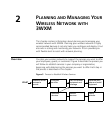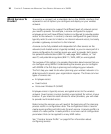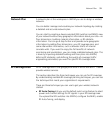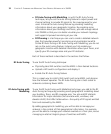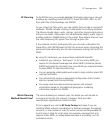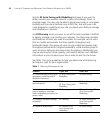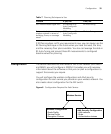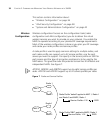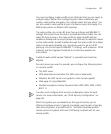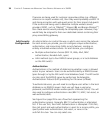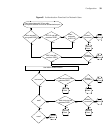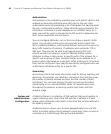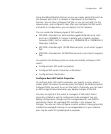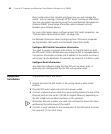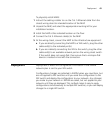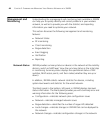
Configuration 37
You must configure a radio profile to set attributes that you can apply to
multiple radios. Rather than configuring each radio individually, you
create a radio profile and apply it to multiple radios that you select. You
can also create a radio profile as part of a domain policy and apply it to
MAP access points on different WX switches.
The radio profile can contain RF Auto-Tuning settings and IEEE 802.11
settings that control how the data is received and transmitted. You can
select RF Auto-Tuning in the radio profile to apply AutoRF settings
(enable or disable auto tuning of power and channels) to radios en masse
via the radio profile. AutoRF enabled through the radio profile to multiple
radios can be easily disabled, too, should you want to go to full RF
planning. You can set specific IEEE 802.11 settings, such as beacon, DTIM
intervals, and the fragment threshold to control how packets are
transmitted.
A default radio profile named “default” is provided and cannot be
deleted.
For each service you want to provide, you configure the following items
in a service profile:
The SSID name
SSID advertisement (whether the SSID name is beaconed)
Whether the SSID name is encrypted or clear (not encrypted)
Web page (if using WebAAA)
Multiple encryption choices (Dynamic/static WEP, WPA, WEP + WPA,
802.11i)
You also must configure AAA security configuration items for each
service. For more information, see “AAA Security Configuration” on
page 38.
Which encryption you use depends on the type of services you’re
offering. Employee access is typically encrypted, guest access is typically
clear (no encryption), and multi-host or “multiple virtualized services”
service can be encrypted, with each SSID being matched with its own
service profile.



